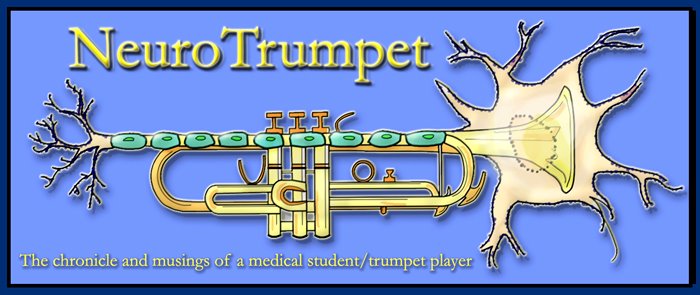Apparently Bertha died at the ripe old age of 83 due to ovarian cancer, Alzheimer’s and COPD (chronic obstructive pulmonary disease). Many of the cadavers—since they’re mostly old folks—died of “failure to thrive.” That seems to be the medical phrase for “old age.”
Anatomy is progressing fairly well despite the huge (no pun intended) obstacle of Bertha’s obesity. We’ve dissected the entire upper and lower back down to the spinal cord, the neck region down to the suboccipital triangle, the pectoral, shoulder, axillary and upper arm regions down to the nerves and blood vessels. The latter two structures are very difficult to dissect on Bertha because they’re buried in layers of adipose globules that render them difficult to find and clean. It takes us nearly twice as long to dissect our body compared to the other groups.
My biggest obstacles regarding the material are the challenging new vocabulary and memorizing the nerve/vessel innervation of each muscle. It’s not uncommon to encounter 100 new words each day, most of which look positively alien (a couple of my favorites are syncitiotrophoblast and rectus capitis posterior major—and yes, spelling counts). Identifying structures on the cadavers can be challenging since they’re… I don’t want to say “mutilated,” but… not pretty. There’s also anatomical variability between different bodies.
I felt extremely overwhelmed and distressed the first week, and spent the vast majority of the weekend studying, thereby minimizing social activities and personal leisure. Although I never quite caught up with the material, I feel more at ease with the pace and volume of information and thus more inclined to be more outgoing again. I feel less stressed and I’ve already made weekend plans. I’m more comfortable feeling behind, and the pressure to master every last detail has waned. Much of the initial anxiety was probably due to the abrupt lifestyle change, and some of the repose stems from solidarity with members of a study group I’ve joined.
I’ve also made plans to shadow a neurologist and scope out the lab of a couple doctors so I can get a jump on summer research plans (if I apply early with a good project, I can obtain a Roessler scholarship). I’ve also signed up to volunteer at the Columbus Free Clinic, and I plan to join the neurology and dermatology interest groups. I’m considering applying for a leadership position in DIVE-IN, a student-run organization that seeks to coordinate shadowing opportunities, grand rounds and specialty panel discussions for medical students.
The title of this blog is called “NeuroTrumpet,” right? I’m trying to stay in shape with trumpet, but at the moment I only get a chance to practice every other day. Since I seem to be adapting to school, I’m optimistic that I’ll be playing every day in a week or two, and be back in shape by mid-September. That’s when the auditions are being held for the symphonic bands at OSU. More on that later.
I’ve decided to leave you with a “cool disease” at the conclusion of each blog, so here’s this week’s. It’s called a sacrococcygeal teratoma. It’s a birth defect that occurs early-on in fetal development and results from inadequate closure of the caudal (tail) end of the primitive streak (a structure that forms in the first few weeks). Since it is derived from pleuripotent stem cells, it contains tissue from all three germ layers. It’s commonly benign, and can be surgically excised.

Oh, just say it. "Mutilated!"
ReplyDeleteSyncitiotrophoblasts must have multiple nuclei and are precursor cells to...something...Google help me!
Scholarship = :) Lab = ...?